THE KEEP. Where bad dreams take on tangible form
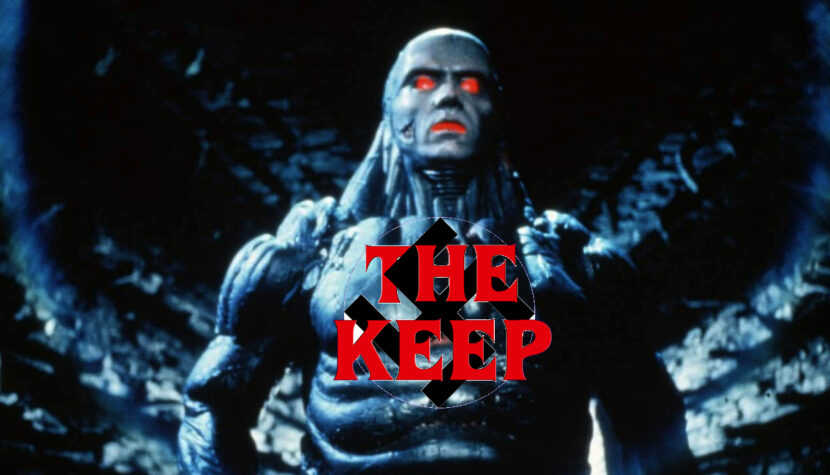
Not every director can find their footing in the horror genre, even the most acclaimed ones. Oliver Stone attempted to scare us with The Hand starring Michael Caine before he discovered that he preferred to deal with political and social commentary rather than murderous limbs. John McTiernan, the master of action cinema, made his debut with Nomads, a horror tale featuring a young Pierce Brosnan, but it mainly frightened with boredom and loud music. Another example is Tony Scott, who successfully debuted with The Hunger but wasn’t associated with horror cinema afterward.
What these three films have in common is that these famous creators embarked on them early in their careers, perhaps already aware that they were interested in a different kind of cinema but intrigued by the possibilities that only horror could offer them. Typically, in the case of their first films, this genre is also considered due to its cost-effectiveness – you don’t need a large budget to make a scary, and therefore successful, film. All you need is an idea and a specific sensitivity, which seems to have been lacking for Stone and McTiernan, and perhaps Scott simply found it insufficient. Michael Mann also grappled with the horror genre, choosing The Keep as his second feature film, a supernatural horror film set during World War II. It’s an intriguing and somewhat ambitious work but ultimately quite uneven, indicating very different creative interests for the director, who never ventured into the realms of fantastic horror again.
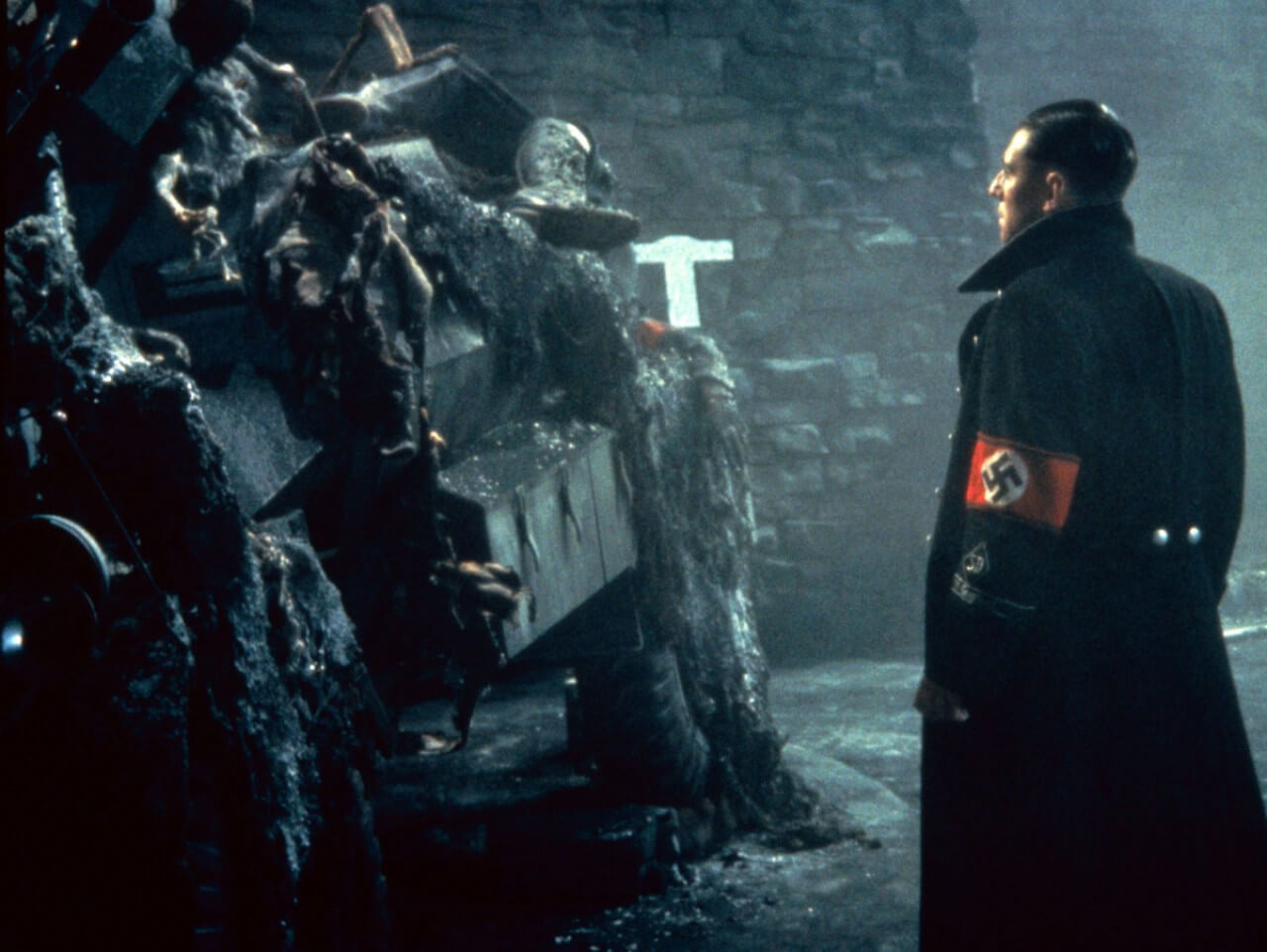
Romania, 1941. German forces occupy the titular keep in a small village in the Carpathian Mountains. The commanding officer, Captain Woermann (Jürgen Prochnow), is warned by the keeper of the building to leave the place, but the soldier disregards the words of the local and the strange properties of the keep. The keep is adorned with 100 nickel crosses, and its architecture suggests defense against an internal threat rather than an external one. On the very first night, two guards die in a gruesome and unexplained manner. Shortly thereafter, an SS unit arrives and blames Romanian rebels, but the execution of several innocent villagers doesn’t stop the deaths among the Germans. Soon, a historian (Ian McKellen) who specializes in the history of the keep, along with his beautiful daughter, is summoned to the site.
If I didn’t know that The Keep was directed by the creator of Heat, The Last of the Mohicans, and Thief, Michael Mann, his name would certainly be very far down the list of potential authors of the film. This adaptation of F. Paul Wilson’s novel surprisingly stands out in Mann’s filmography. It’s a genre hybrid that combines horror and fantasy with war cinema, an extravagant production that deviates from Mann’s typical realism, focusing on a dreamlike atmosphere and prioritizing the visual impact of the film over narrative logic. You can recognize the American director in the visually stunning yet cold frames, the sense of alienation and loneliness, and ultimately in the character who stands on the wrong side of the law but has his own code to abide by, which dictates his entire life.
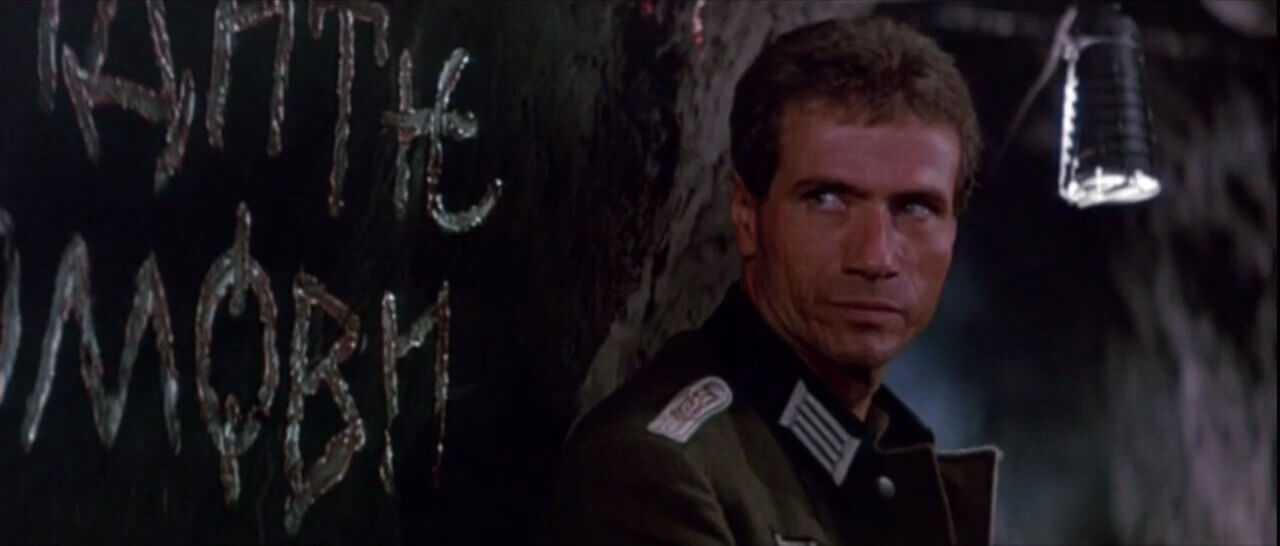
At first, Captain Woermann appears to be such a character, a “good German” who refuses to engage in the Nazis’ brutality and strives to ensure the safety of his men and the local residents. But after a while, Mann becomes more interested in Dr. Theodor Cuza, who forms a kind of pact with a mysterious force that kills soldiers, granting him health, strength, and a dangerous conviction that he’s the monster to destroy the Third Reich, seeking vengeance for the Jews. Shortly thereafter, the third character in the drama appears, Glaeken (Scott Glenn), a foreign man with incredibly bright eyes, no reflection in the mirror, and a mission to defeat the entity inhabiting the keep. Mann clearly struggles to determine who the film’s main character is, shifting from one character to another, from one plotline to another, losing the essence of the entire story in the process. The showdown between Woermann and his actual opponent, SS-Sturmbannführer Kaempfer (Gabriel Byrne), the conflict between Cuza and the local priest (Robert Prosky) over the existence of God, and the most important confrontation between the two fantastic beings all fail to resonate because we learn so little about them. Surprisingly, Mann’s portrayal of the romance between Glaeken and Cuza’s daughter is the most successful aspect of The Keep —though still quite sketchy and rapidly developed, it is not devoid of emotion, primarily due to the excellent performance by Alberta Watson.
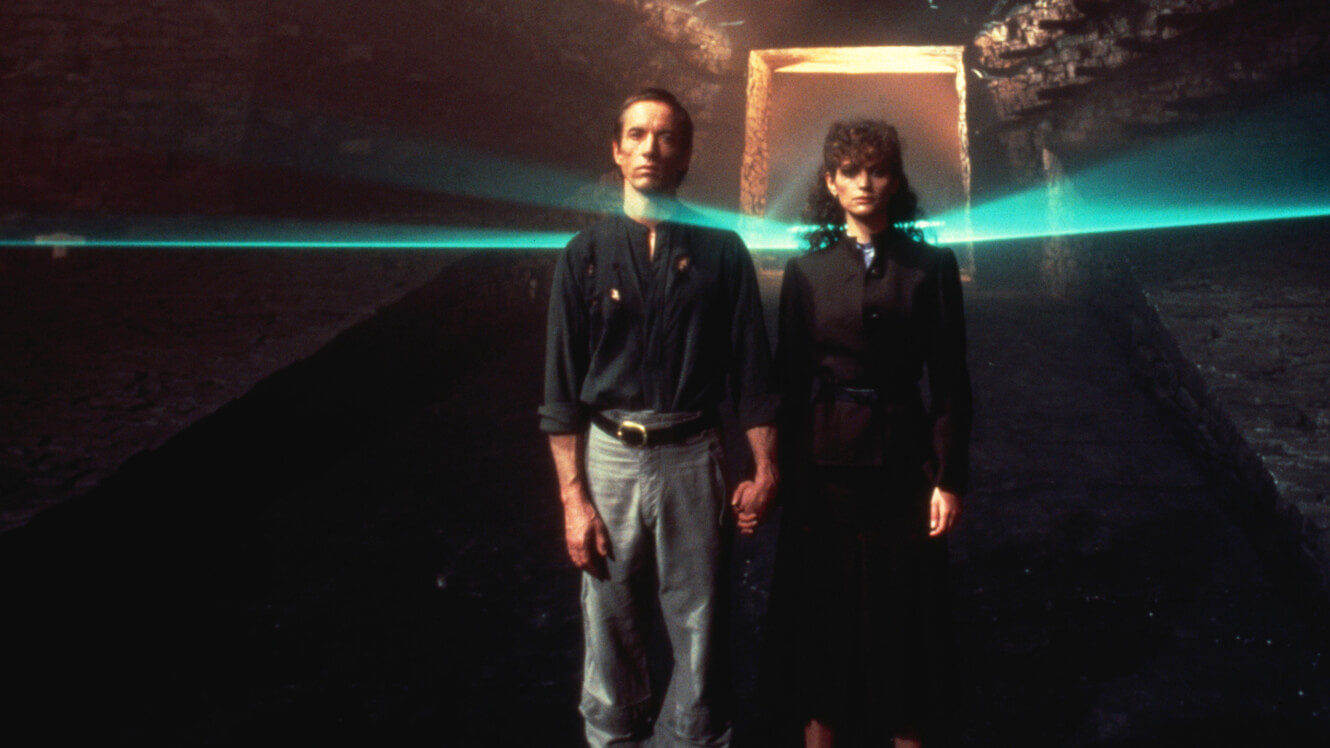
How to explain this narrative nonchalance? In interviews during The Keep ‘s production, the director admitted that he wasn’t interested in explaining anything. Despite a reasonably clear setup, the rest of the film is governed by dream logic, propelling characters from one place to another without a clear reason. Unlike the original book, Mann rejects rationalization, avoids literal interpretations, and downplays typical horror tropes like vampirism. He manages to create an aura of uncanniness at the cost of coherence. However, it’s also important to note that the infamous interference with the director’s final cut, where the studio reduced Mann’s original three-and-a-half-hour version to 96 minutes, significantly complicates viewers’ ability to make a fair assessment of the film. In its current form, any narrative gaps may be the result of the producers’ decisions, rather than Mann’s choices. In other words, one should be cautious when trying to determine the extent to which Mann’s vision aligns with what we see on screen.
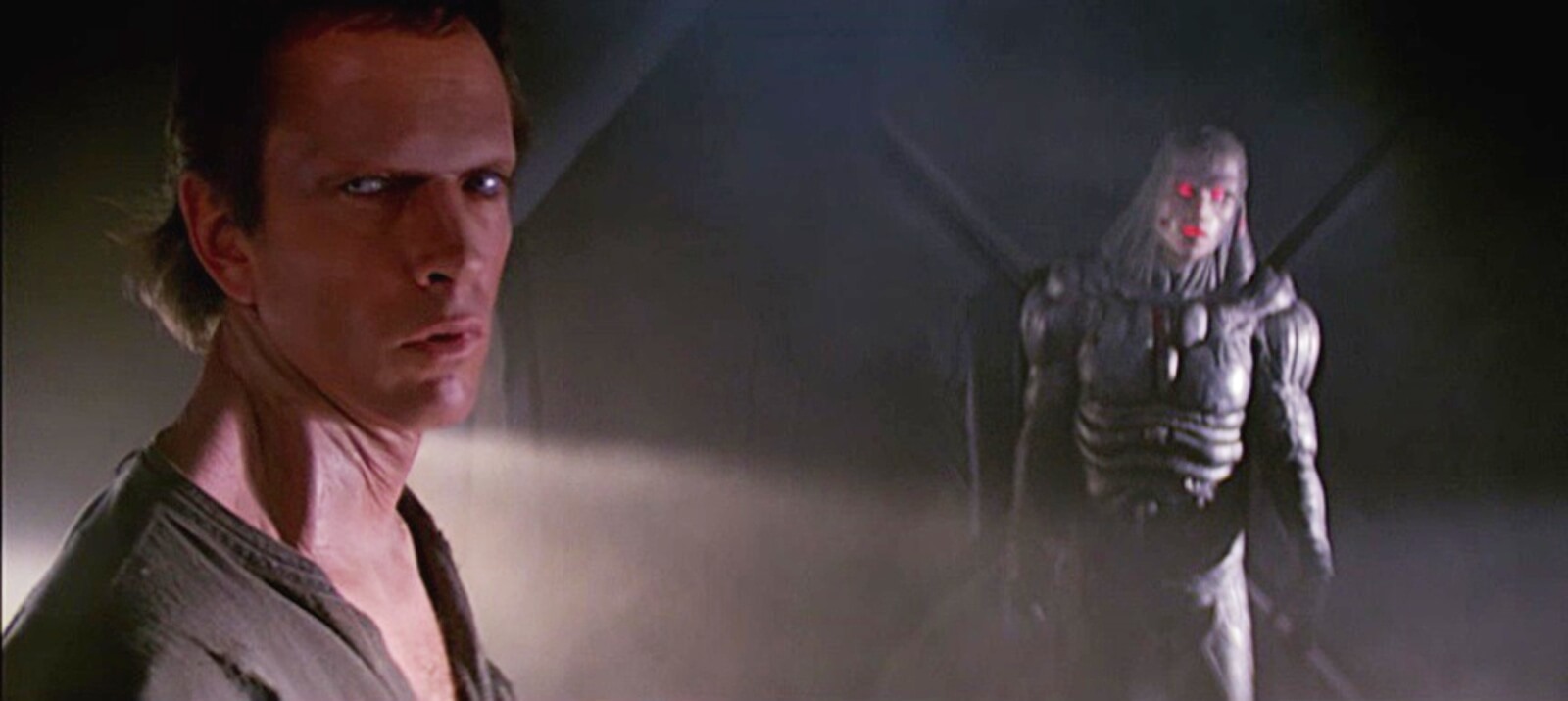
However, what the studio couldn’t undermine is the film’s visual aspect, which looks stunning even by American director Mann’s standards. The Keep contains scenes, sometimes just shots, that astound with their composition and rhythm, stripped of realism. Electronic music by Tangerine Dream significantly contributes to this otherworldly atmosphere. The scene where two soldiers run in slow motion into a room illuminated by a cross has become iconic, suggesting Mann’s intentions. Instead of aiming for horror with less refined methods, the director chooses to focus on creating a dreamlike, highly unreal atmosphere, leaving the horror and the monster in the castle in the background. He manages to instill fear in us not through what we see but through how it’s presented to us. When one of the guards almost falls through a hole in the wall into a massive hidden chamber, the camera, in one long shot, moves away from the character, painting him against an entirely invisible, black background. Soon, the only bright point, which is the soldier, nearly disappears from our field of view, while we are gripped by genuine fear of the infinite vastness of the place and the uncontrollable darkness. Mann’s created images work more on the subconscious, but they are so effective that even many years after watching The Keep, they linger in the viewer’s memory.

This place has its strengths, and these words are spoken in the film, but they can also apply to the movie itself. It’s a flawed creation, incomplete, and therefore imperfect, but due to the lack of another version aligned with the director’s wishes, it’s the only one we get to see and assess. The reason I chose The Keep for this series, which I’ll never call a successful film due to its behind-the-scenes problems, is quite simple. Mann abandoned horror in favor of a completely different kind of cinema, and the result of his one-time adventure with this genre is in many ways much more interesting and original than the mass-produced horror films by directors associated with the genre.
As the film nears its end, there are fewer dialogues and less realism. In one of the last scenes, when Kaempfer steps onto the courtyard, everything is shrouded in mist, and the dead soldiers seem to be part of the fortress’s walls. The powerful Molasar, the creator of this eerie landscape, triumphs through the sheer force of his existence. We don’t quite grasp the image before our eyes, but we know that any attempt to explain it would weaken the impact of this nightmarish vision. This uncanniness ties the film together, providing at least a semblance of what Mann aimed to achieve. It’s a bit of a pity for the director, who later made The Insider and Collateral, both outstanding films. Perhaps due to the unpleasant experiences associated with The Keep, he stopped seeing cinema as a place where bad dreams take on tangible forms.

